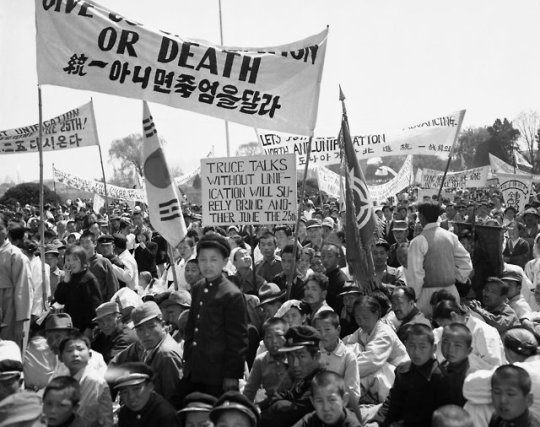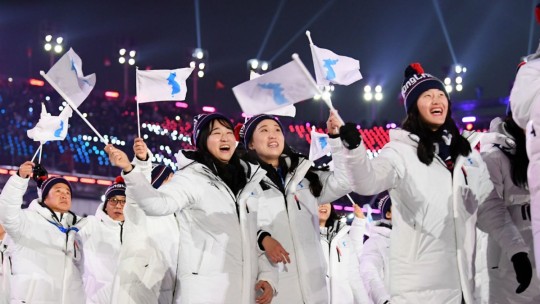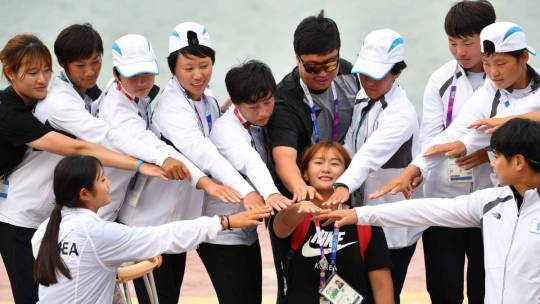#especially when that decade started with the demilitarization of the Trade Union after the Invasion of Naboo
Explore tagged Tumblr posts
Text
You know sometimes I think too long about where the fuck the Kaminoians got millions of clone uniforms and armor sets and I start having some real question about how the hell the clones were a complete secret for over a decade
#sw meta#kamino#clone wars#tcw#especially when that decade started with the demilitarization of the Trade Union after the Invasion of Naboo#like none of the garment workers making combat blacks to go under armor had any questions about the up in production????#no comment from the armor foundries suddenly getting an order for millions of human soldiers?????#and if the answer is ‘they made everything in house’ I don’t fucking believe you no they didn’t
225 notes
·
View notes
Photo

Week 6: The Korean War
I’ve never been a history buff, but this week we had the once-in-a-lifetime honour of meeting Brigadier (Retd) B.A.H. Parritt CBE, a British Korean War veteran who fought as part of the Allied troops. His story of devastation, terror and heroism will stay with me for a very, very long time.
(As his talk deserves a whole separate post, here’s my homework for this week for now...)
A (very) brief timeline of Modern Korean History (1900 - now)

[1910 - 1945] Imperial Japanese rule: The Empire of Japan defeats the Chinese Qing Empire and Russian Empire over ambitions for Mancuria and Korea. However, the end of World War II effectively ends with bomb dropped by the United States on Hiroshima and Japan announces its surrender to the Allies. Orders from Washington sees the divide the Korean Peninsula into Soviet and U.S. occupation zones via the 38th parallel.

[1945 - 1948] Division of Korea: In 1948, Syngman Rhee is elected as South Korean president and the Republic of Korea (South Korea) is established. A month later, Democratic People's Republic of Korea established in the North. Despite its name, the government, established by the Soviet Union, is a communist one lead by Premier Kim Il-sung.

[1950 - 1953] Korean War:
Believing he could capture South Korea in 27 days, Kim Il-sung seeks Stalin's support for an invasion with China available for reinforcement.
The Korean People's Army (KPA) crosses the 38th parallel to invade the South and reach the outskirts of Seoul by June 1950.
The UN Security Council approves the use of force to help South Korea, prompting President Truman of the United States to send nearby U.S. Naval and Air forces.
However, having underestimated the North, the KPA swiftly advance South, forcing UN forces to retreat within the ‘Pusan Perimeter,’ a 140-mile (230 km) defensive line.
After amassing troops and supplies at the port of Pusan, the UN forces launches a counterattack at Incheon and by 25 September 1950 Seoul is recaptured by South Korea.
Several phases of offensive attacks from the North continue over several months as Chinese involvement intensifies via the People's Volunteer Army (PVA) and the continued support of Stalin.
Suffering large-scale losses on both sides, stalemate is reached and armistice negotiations begin on 10 July 1951 and last on-and-off for two years.
A final peace treaty agreement is signed on 27 July 1953 at Panmunjom with the 38th Parallel reset as the boundary between North and South Korea, also known as the demilitarized zone (DMZ).

[1954 - now] Modernisation of North and South Korea:
After a military coup in the 1960s and several changes in leadership throughout the 1970s, fast-paced changes, both political and economical, happen in the South.
Starting with the constitution changing to allow direct election of the president in 1981, the 1980s saw South Korea’s swift technological advancement through investing in electronics and the computer industry.
In North Korea, post-war efforts were largely supported by the Chinese and governments. However economic expansion and increasing living standards came to an end in the 1970s when due to mounting debt as N. Korea decided to decrease its dependence on its neighbours’ aid
North Korea remains largely secluded from the rest of the world, both in terms of its foreign policy and trade relations. As a communist government with a hereditary succession of leadership, Kim Il-sung remained the supreme leader until his death in 1994, after which his son, Kim Jong-il took power. Kim Jong-il's son, Kim Jong-un, is the current leader, after his father's death in 2011.
2018: Looking to the future...(of reunification?)
From the impeachment of former S. Korean President Park Geun-Hye in October 2016 due to charges of corruption to the landslide victory during elections of current President Moon Jae-in, the past two years has seen a huge thaw in the relations between the two Koreas.
2018 has especially been a momentous one in the history of North and South Korea. As a sign of things to come, after months of diplomatic negotiations, it was agreed that at the 2018 Pyeongchang Winter Olympics, North and South would march together in the opening ceremony and put forward a united women's ice hockey team.

Then, the unthinkable happened: on 27 April 2018, after decades of antagonistic relations, Kim Jong-un became the first ever North Korean leader to enter the South to meet President Moon for a peace talks summit in the South Korean zone of the Joint Security Area. The world held its breath as the two shook hands across the demarcation line, followed quickly with a subsequent sigh of relief as both leaders greeted one another with smiles, not to mention an unexpectedly heart-warming moment when Moon was seen to be helping Kim over the threshold.

The summit was declared a successful one, with both countries pledging to agree to end hostile actions and work towards complete denuclearisation of the Korean Peninsula. Symbolic changes continued after the summit, starting with North Korea adjusting its time zone to match the South's on 10 May 2018. At the same time, S. Korea also began removing propaganda loudspeakers from the border area.
Following the summit in Singapore between U.S. President Donald Trump and Kim Jong-un in June of this year, things continue to look positive for the possibility of reunification with both sides taking active steps in improving relations. So far, we’ve seen the reunification of families separated for decades since the Korean War in August, as well as North and South Korea competing as ‘Korea’ for several events over the summer at the 2018 Asian Games. Most recently, President Moon also became the first ever S. Korean leader to address the N. Korean public at the Arirang Festival on 19 September.
With so many historic firsts happening just within the past few months, I can only imagine they will continue well into the future. I wholehearted wish both North and South Korea the best in their continued effort towards a peaceful Korean peninsula for years to come.

1 note
·
View note